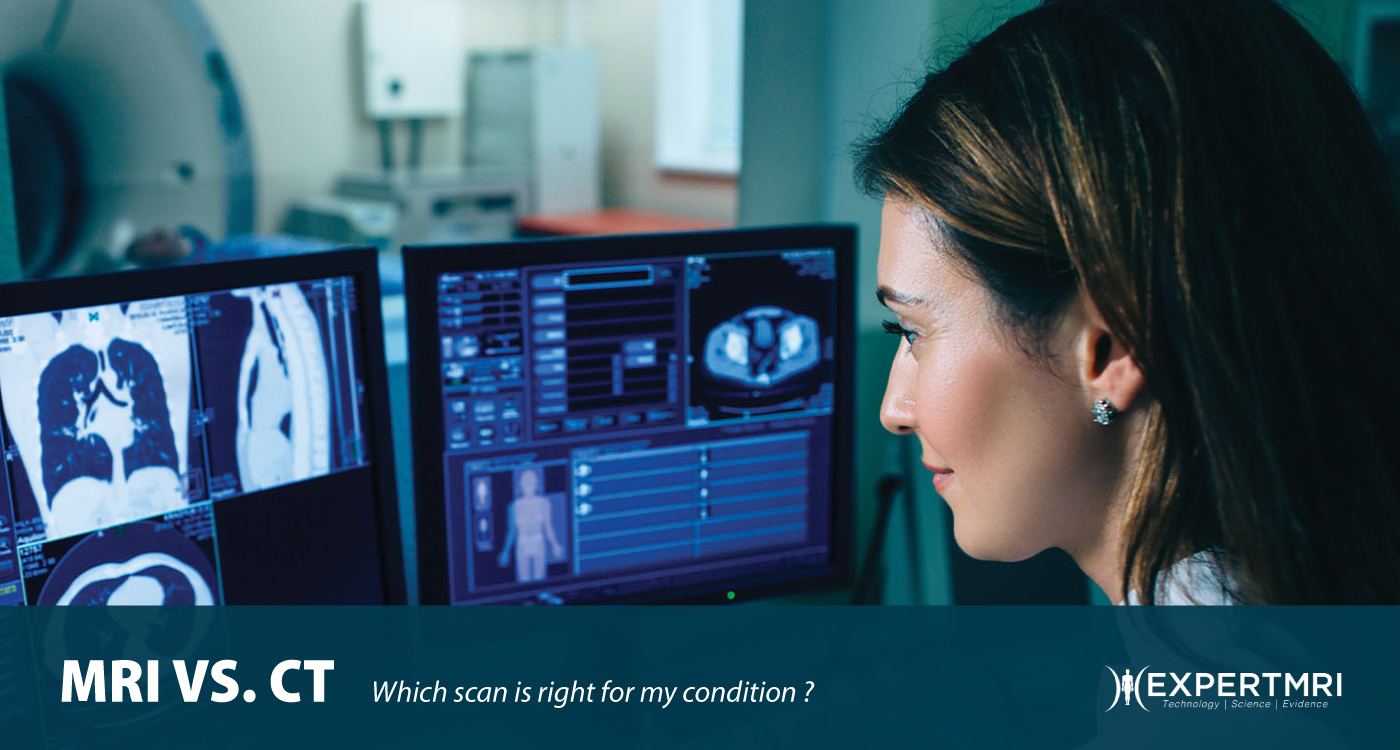CT (computed tomography) and MRI (magnetic resonance imaging) are imaging tests used to produce internal images of the bones, organs, structures, and tissues within the body. The machines look similar, resembling large donuts into which the patient is placed during the exam. To the untrained eye, even the images they generate appear similar.
In reality, these are two very different technologies and are mostly used in different ways by healthcare professionals to reach an accurate diagnosis for a patient. Because the technology of each continues to evolve, it is not uncommon for one of these technologies to replace the other as a doctor’s preferred imaging technique.
CT scans are used more frequently than MRIs. They are also generally less expensive. A CT scanner is basically an X-ray camera rotating around the patient, capturing multiple images of a part of the body from different angles. These images are then assembled by a computer into anatomical “slices” that are reviewed by a radiologist—a specially trained medical doctor—who will provide a diagnosis. CT is fast, requiring only a few seconds to capture the images. Because the scan is X-ray-based, it exposes the patient to a low amount of radiation.
MRI on the other hand, uses a powerful magnet, radio waves, and a sophisticated computer to produce its images. In many cases, MRI images are more detailed, especially when it comes to soft tissues within the body like tendons and ligaments. However, an MRI takes much longer than a CT scan and is typically more expensive. Because of this, CT is often used first to diagnose or rule out certain conditions, such as cancer. It is also more often used for cardiac imaging, where the CT scanner’s incredibly fast speed is able to capture images of the heart and arteries between heartbeats.
While X-ray is still used for broken bones, it is not recommended for complex injuries of the brain, neck or spine. MRI is the preferred method for these types of injuries, where diagnosing the full extent of injuries to the soft tissues and structures surrounding the bones is just as important as diagnosing injuries to the bones themselves. This is why MRI is used most often for those who have experienced an injury; a CT scan will not reveal soft tissue injuries common to whiplash, traumatic brain injury, and more.
Furthermore, while the radiation exposure of a single CT scan is low, many in the medical field have concluded that repeated CT scanning—especially in children—could be harmful. This is why MRI is preferred for children (e.g. scoliosis imaging) and women who are pregnant (e.g. breast screening). Conversely, MRI cannot be used with some patients who have certain types of implanted medical devices that contain metal, such as pacemakers and brain stimulators. Fortunately, newer implant technologies are designed with MRI imaging in mind, so patients with these devices may be safely imaged within a magnetic field.
In most cases, your doctor will know what test to order for your specific needs. When the decision is not certain, your doctor may consult with one of the doctors at Expert MRI to recommend the best type of scan for your condition or suspected condition.
Expert MRI has California’s widest assortment of high field, open and upright MRI systems to give clinicians more imaging options to achieve the most accurate diagnosis for their patients. In addition, the cash price of our MRI exams is very low, in many cases lower than the cost of a CT scan at a hospital or other imaging center.














